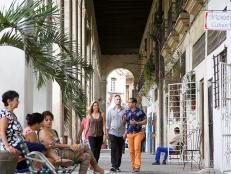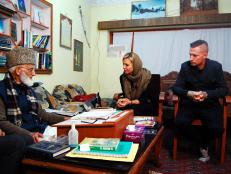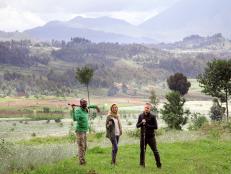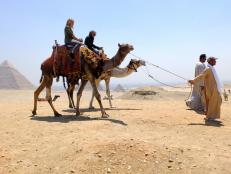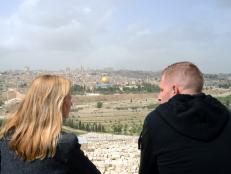Breaking Borders: Sarajevo Pictures
Journalist Mariana van Zeller and acclaimed chef Michael Voltaggio travel to Sarajevo, the capital of Bosnia and Herzegovnia, to understand how 3 ethnic groups — the Serbs, Croats and Bosniaks — coexist among the ghosts of a fatal past.

Episode:
Tears and Tunnel of Hope in Sarajevo
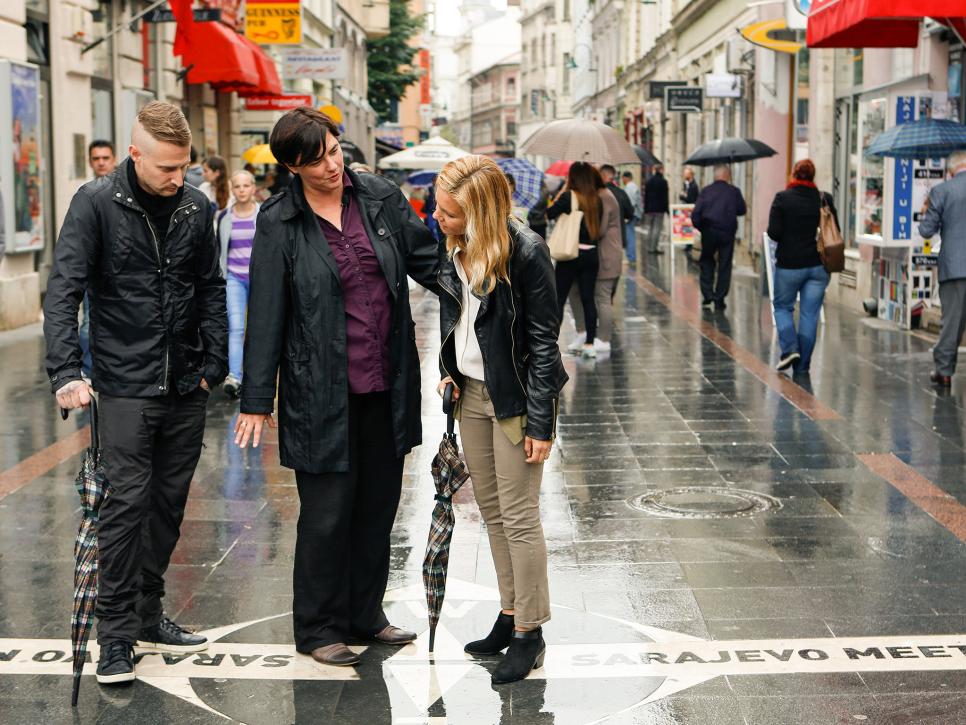
Sarajevo City Line
Michael Voltaggio and Mariana van Zeller listen as local guide/fixer Sabina Niksic explains the significance of the Sarajevo city line that separates the east from the west in Bosnia and Herzegovina.
Sarajevo's Varied Religions
From this spot, anyone can see a temple, a mosque and a church, which shows the varied religious groups existing within a small radius in Sarajevo. Related Video: People and Culture of Sarajevo
Children's Memorial
Michael, Mariana and Sabina read some of the 521 names on the column that honors children killed during a period of ethnic cleansing, when the Bosnian Serb forces wiped out thousands.
A Fountain in Dedication
A fountain accompanies the monument dedicated to the children.
Drink and You Will Return to Sarajevo
Mariana drinks from a spigot at a Turkish mosque. Legend has it that if you drink from the spigot, you will return to Sarajevo.
Sarajevo Rose Memorial
A Sarajevo Rose memorial is a concrete scar made by a mortar shell explosion that was later painted with red resin to remember those who were killed during the siege of the city.
Copper and Pewter Teacups
Beautifully stacked copper and pewter teacups sold on Coppersmith Street (Kazandziluk Street). Related Video: Handmade Copper in Sarajevo
Michael Voltaggio Shops for Copper
Michael examines a decorative copper container on Coppersmith Street (Kazandziluk Street).
Coppersmith Street
A unique view of the quaint Coppersmith Street, which is home to vendors selling handmade items made of copper, including coffee sets. Bosnian coffee is a popular commodity in the country.
History Lesson in Sarajevo
Muslim dinner guest Haris Pasovic shows Michael and Mariana areas of significance that relate to the conflicts in Bosnia.
"Sniper Alley"
A view of "Sniper Alley," where Bosnian Serbs hid in the tall buildings, shooting anyone that walked down the city's commonly used street. Women, children, public servants and United Nations peacekeepers were all reported to have been killed by sniper fire between 1992 and 1995.
Tunnel of Hope
Michael, Mariana, Sabina and Haris visit the Tunnel of Hope, which was used during the Bosnian War to transport food, war supplies and aid and served as a means of escape between the neighborhoods of Dobrinja and Butmir.
Restaurant Kibe
The beautiful dining room of Restaurant Kibe, one of the many establishments that Mariana and Michael visited during their time in Sarajevo.
Restaurant Kibe
Michael and Mariana marvel at the dishes on the table at Restaurant Kibe.
